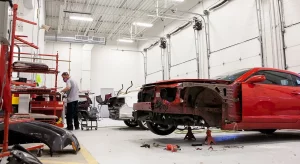Car accidents are an unfortunate reality for frequent drivers, and understanding your rights in the aftermath of such an incident is crucial. Navigating the legal web surrounding car accident cases can be complex, but drivers can protect their rights effectively armed with knowledge. In this article, we will unravel the key legal intricacies every frequent driver should know when it comes to car accidents.
Determining Fault: The Foundation of Your Rights
One of the first and most critical aspects to understand after a car accident is the determination of fault. In many jurisdictions, the at-fault party is responsible for covering damages and injuries resulting from the accident. However, the process of establishing fault is not always straightforward.
Frequent drivers should be aware that multiple factors contribute to the determination of fault. This includes traffic laws, witness statements, police reports, and sometimes even the assessment of accident reconstruction experts. It’s crucial to document the scene thoroughly, gathering witness contact information and taking photographs that may serve as evidence in establishing fault.
Comparative Negligence: How Your Actions Impact Your Rights
Many jurisdictions operate under a comparative negligence system, meaning that even if you share some degree of fault in the accident, you may still be entitled to compensation. Understanding how comparative negligence works is vital for frequent drivers.
Suggestion: When Do 2025 Cars Come Out? – Upcoming Cars Going On Sale
In cases of comparative negligence, the compensation awarded to an individual is reduced based on their percentage of fault. For example, if you are deemed 20% at fault, your compensation will be reduced by that percentage. Frequent drivers need to grasp this concept to assess their rights accurately and determine the potential impact on any compensation they may seek.
Navigating Traffic Laws: The Rules That Shape Your Rights
Traffic laws play a significant role in shaping the rights of drivers involved in accidents. Frequent drivers should be well-versed in local traffic regulations, as these laws influence the determination of fault and impact other aspects of the legal process.
Understanding the rules governing the right of way, speed limits and traffic signals is crucial. Violations of these laws can substantially impact the legal outcome of a car accident case. Frequent drivers who are aware of these regulations can better protect their rights by demonstrating adherence to traffic laws or identifying instances where the other party may have violated them.
Dealing with Law Enforcement: Your Rights and Responsibilities
Law enforcement officers often play a crucial role in documenting and assessing car accidents. Frequent drivers should know their rights and responsibilities when interacting with the police at the accident scene. It’s important to provide accurate information, cooperate with the investigation, and request a copy of the police report.
However, it’s equally important for drivers to remember that statements made to the police can be used as evidence. Frequent drivers should avoid admitting fault or making speculative statements. Instead, sticking to the facts and avoiding conjecture can protect their rights in the long run.
Legal Representation for Frequent Drivers
While not every car accident case requires legal representation, frequent drivers should be aware of the situations where hiring an attorney is advisable. If the case involves severe injuries, disputed liability, or challenges in dealing with insurance companies, seeking legal counsel becomes crucial.
An experienced attorney can guide frequent drivers through the complexities of the legal process, ensuring their rights are protected. This includes handling negotiations with insurance companies, gathering evidence, and representing the driver’s interests in court if necessary.
Enhancing Safety through Modern Vehicle Technologies
In recent years, the automotive industry has witnessed a transformative shift towards integrating cutting-edge safety features into vehicles. These advancements not only aim to reduce the severity of accidents but also contribute to preventing collisions altogether. For frequent drivers, understanding how these technologies operate can be essential for their safety and in shaping the dynamics of fault determination in the aftermath of an accident.
Collision Avoidance Systems
Automatic Emergency Braking (AEB): This technology is designed to detect an imminent collision with an obstacle or another vehicle and automatically apply the brakes if the driver doesn’t respond in time. Frequent drivers benefit from AEB as it can intervene in critical situations, potentially preventing accidents or reducing their severity.
Also Check: Land Rover Vs Range Rover- What Is The Difference?
Lane-Keeping Assistance
Lane Departure Warning (LDW) and Lane-Keeping Assist (LKA): LDW alerts drivers when unintentional lane departure occurs, while LKA actively helps steer the vehicle back into its lane. These features enhance driver awareness and play a crucial role in preventing accidents caused by drifting out of lanes.
Adaptive Cruise Control (ACC)
ACC maintains a set following distance from the vehicle ahead by automatically adjusting the vehicle’s speed. Beyond offering convenience, ACC contributes to accident prevention by promoting consistent and safe following distances, reducing the likelihood of rear-end collisions.
Blind Spot Monitoring
This system alerts drivers when there’s a vehicle in their blind spot, providing an extra layer of awareness. By reducing the risk of lane-change-related accidents, blind spot monitoring enhances overall road safety for frequent drivers.
Empowering Frequent Drivers with Knowledge
Car accidents are inherently stressful, but frequent drivers can confidently navigate the legal aftermath by understanding their rights. Being informed is key, from determining fault and grasping comparative negligence to navigating traffic laws and dealing with law enforcement. Frequent drivers should also recognize when legal representation is necessary to safeguard their rights effectively. By unraveling the legal web surrounding car accident cases, drivers can approach these unfortunate situations with the knowledge and confidence needed to protect their rights.






